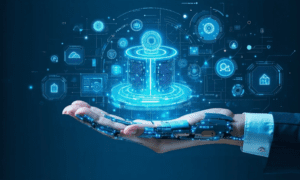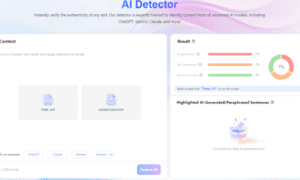The remarkable progress of artificial intelligence (AI) has revolutionised our lives and work. Breakthroughs in large-scale machine learning and natural language processing have significantly enhanced the effectiveness and efficiency of various processes. With advancements like ChatGPT, we are witnessing a level of ‘intelligence’ that was once confined to the realm of science fiction. However, a significant challenge remains in bridging the gap between technical brilliance and real-world implementation.
While AI has made significant virtual strides, the next natural progression lies in deploying AI-powered general-purpose robots in the physical environment. Unfortunately, achieving this milestone is still a formidable task. But what exactly are the barriers hindering the deployment of AI in real-world scenarios? Let’s delve into these challenges and explore potential solutions.
Energy-efficiency
A crucial hurdle lies in the realm of energy-efficiency. At its core, a robot can be considered a self-propelled laptop. Anyone who has used a laptop on the go knows that even the best devices can barely perform for a few hours before requiring a recharge. This limitation is not solely due to the screen but also the energy consumed by internal processes. When it comes to robots, the challenge intensifies as they must operate within the physical environment, necessitating movement. For safety reasons, tethered connections are not feasible, and ideally, the battery life should last longer than 90 minutes.
Currently, the mechanics of robots and autonomous devices are not energy-efficient enough to sustain continuous operation. They need regular and lengthy charging periods to perform optimally. While the first generation of robots is employed in industrial settings for manufacturing purposes, they remain constantly connected to a power source. Existing general-purpose robots, such as Sanctuary’s Phoenix, are carbon-based humanoids, yet they still possess clunky designs and come with high costs. It will take at least five to ten iterations before we achieve a truly independent model that can move freely and perform tasks.
Bridging the gap
To pave the way for effective robots in the physical world, we must start with smaller and simpler applications that serve as bridges toward full AI integration. Cobots, designed to perform simple tasks, can play a crucial role in this process. Examples include self-driving wheelchairs for physically impaired individuals, robots capable of scaling buildings to clean windows, or autonomous technologies that handle complex and focused tasks like smoke diving or repairing power line cut-offs. The key lies in focusing on the performance of a single duty, which not only enhances energy-efficiency but also ensures the highest standard of work.
Integrating AI in the physical environment
The challenge of energy-efficiency in robots stems from their complexity. Real-world navigation requires extensive mental processing for human beings. Translating this process to a robot is no easy feat. However, sensors provide a promising solution.
Depth cameras and other 3D sensors can capture the geometry and texture of physical objects. By analysing this data, AI algorithms can develop a better understanding of the physical world, including spatial relationships, object movement, and human interactions. Creating AI-powered mapping and localisation systems, which employ sensors and cameras to generate maps of the physical environment and track object movement, becomes crucial for achieving genuinely autonomous robotic assistants.
Mechanical efficiency also requires attention. Improving the way robots move, potentially by employing artificial muscles and joints to mimic human motion, can reduce their power requirements. However, this humanoid technology is still a considerable distance away from full realisation.
Shifting the approach
In the tech industry, the aspiration to create intelligent robots has persisted for decades. Yet, it is now evident that a more nuanced and evolutionary approach is necessary. Instead of seeking a single overarching solution from industry giants, a collaborative methodology involving specialised startup companies with expertise in specific components can address the multifaceted challenges faced by developers. Only through this approach can collaboration thrive, ultimately leading to the creation of efficient, functional, and affordable general-purpose robots.
Jonas Angleflod, Group CEO at Theories Group, a startup accelerator on a mission to fund and build startups leveraging technology automating the monetisation of high-intent digital traffic using technology and AI.



































